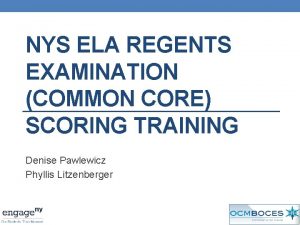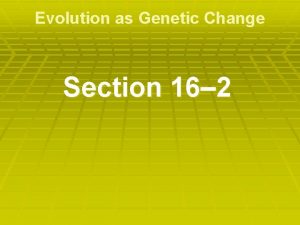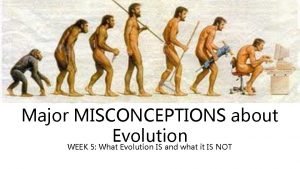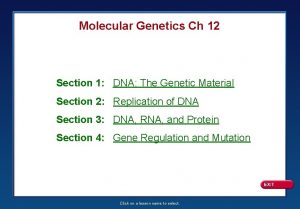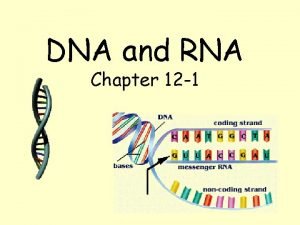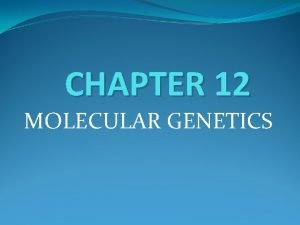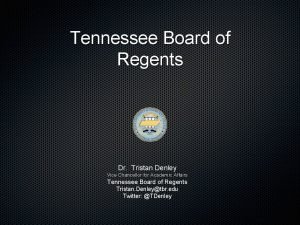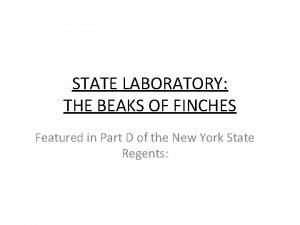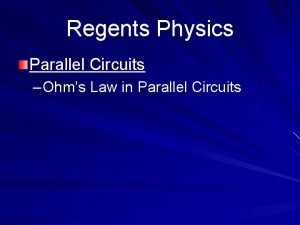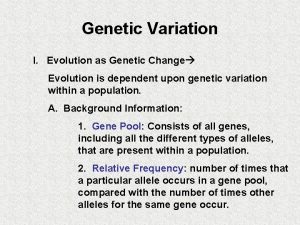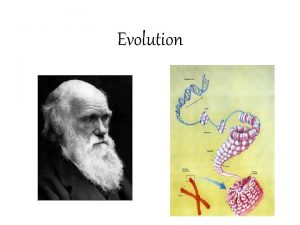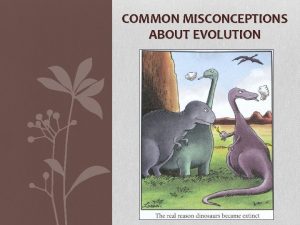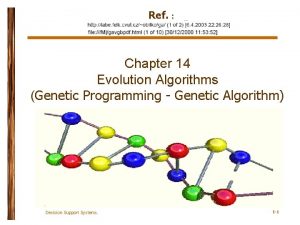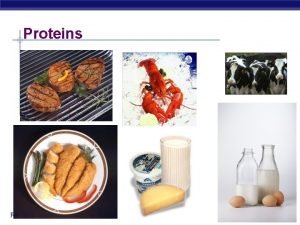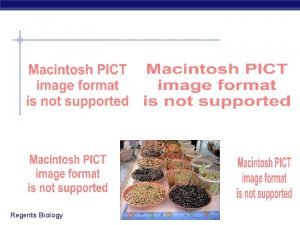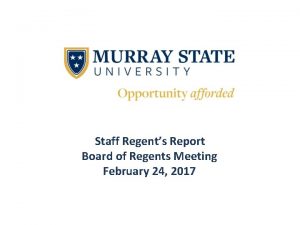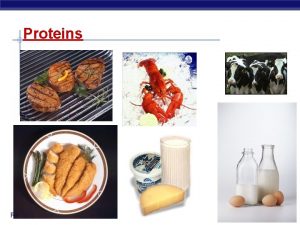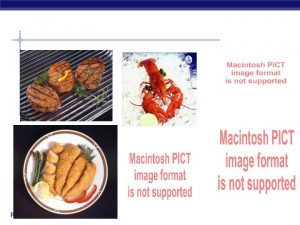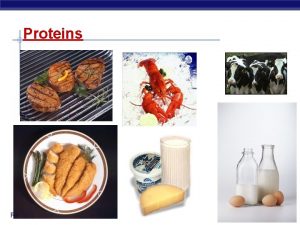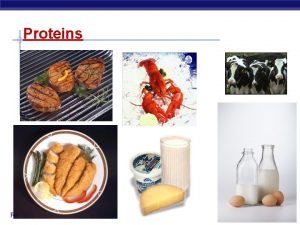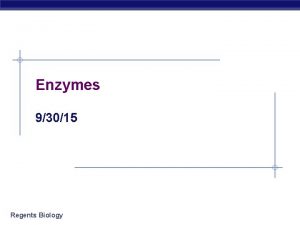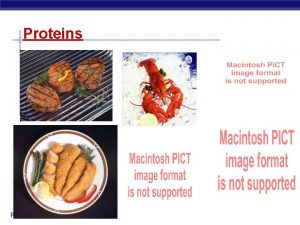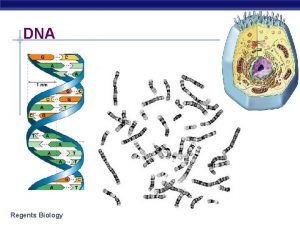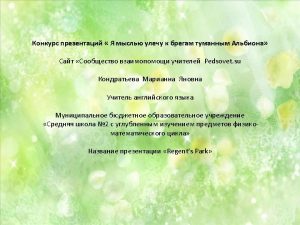Evolution Chapter 16 regents How Common Is Genetic



























- Slides: 27

Evolution Chapter 16 regents

How Common Is Genetic Variation? Many genes have at least two forms, or alleles. All organisms have genetic variation that is “invisible” because it involves small differences in biochemical processes. An individual organism is heterozygous for many genes. Copyright Pearson Prentice Hall

Variation and Gene Pools A population is a group of individuals of the same species that interbreed. A gene pool consists of all genes, including all the different alleles, that are present in a population. Copyright Pearson Prentice Hall

In genetic terms, evolution is any change in the occurence of alleles in a population. Sources of Genetic Variation The two main sources of genetic variation are mutations and the genetic shuffling that results from sexual reproduction. Copyright Pearson Prentice Hall

Mutations A mutation is any change in a sequence of DNA. Mutations occur because of mistakes in DNA replication or as a result of radiation or chemicals in the environment. Mutations do not always affect an organism’s phenotype. Copyright Pearson Prentice Hall

Gene Shuffling Most heritable differences are due to gene shuffling. Crossing-over increases the number of genotypes that can appear in offspring. Sexual reproduction produces different phenotypes, but it does not change the relative frequency of alleles in a population. Copyright Pearson Prentice Hall

16 -2 Evolution as Genetic Change Natural selection affects which individuals survive and reproduce and which do not. Evolution is any change over time in the relative frequencies of alleles in a population. Populations, not individual organisms, can evolve over time. Copyright Pearson Prentice Hall

Natural selection on single-gene traits can lead to changes in occurences and thus to evolution. Copyright Pearson Prentice Hall

Genetic Drift What is genetic drift? • A random change in occurrence Genetic drift may occur when a small group of individuals colonizes a new habitat. Individuals may carry alleles in different relative frequencies than did the larger population from which they came. Copyright Pearson Prentice Hall

Genetic Drift Copyright Pearson Prentice Hall

Descendants Genetic Drift Population A Population B When the occurrence of a trait changes due to migration of a small subgroup of a population it is known as the founder effect. Copyright Pearson Prentice Hall

16 -3 The Process of Speciation Natural selection and chance events can change the relative frequencies of alleles in a population and lead to speciation. Speciation is the formation of new species. A species is a group of organisms that breed with one another and produce fertile offspring. Copyright Pearson Prentice Hall

What factors are involved in the formation of new species? The gene pools of two populations must become separated for them to become new species. Copyright Pearson Prentice Hall

Isolating Mechanisms As new species evolve, populations become reproductively isolated from each other. When the members of two populations cannot interbreed and produce fertile offspring, reproductive isolation has occurred. Copyright Pearson Prentice Hall






Testing Natural Selection in Nature Studies showing natural selection in action involve descendants of the finches that Darwin observed in the Galápagos Islands. The finches Darwin saw were different, but he hypothesized that they had descended from a common ancestor. Copyright Pearson Prentice Hall

Copyright Pearson Prentice Hall

Copyright Pearson Prentice Hall

Speciation in Darwin's Finches Speciation in the Galápagos finches occurred by: • • • founding of a new population geographic isolation changes in new population's gene pool reproductive isolation ecological competition Copyright Pearson Prentice Hall

Founders Arrive A few finches—species A—travel from South America to one of the Galápagos Islands. There, they survive and reproduce. Copyright Pearson Prentice Hall

Geographic Isolation Some birds from species A cross to a second island. The two populations no longer share a gene pool. Copyright Pearson Prentice Hall

Changes in the Gene Pool Seed sizes on the second island favor birds with large beaks. The population on the second island evolves into population B, with larger beaks. Copyright Pearson Prentice Hall

Reproductive Isolation If population B birds cross back to the first island, they will not mate with birds from population A. Populations A and B are separate species. Copyright Pearson Prentice Hall
 Genetic drift คือ
Genetic drift คือ Genetic programming vs genetic algorithm
Genetic programming vs genetic algorithm Genetic programming vs genetic algorithm
Genetic programming vs genetic algorithm What is gene flow and genetic drift
What is gene flow and genetic drift Gene flow vs genetic drift
Gene flow vs genetic drift English regents part 3 text analysis response answers
English regents part 3 text analysis response answers Section 16–2 evolution as genetic change
Section 16–2 evolution as genetic change Common misconception about evolution
Common misconception about evolution Molecular genetics section 1 dna the genetic material
Molecular genetics section 1 dna the genetic material Chorionic villus
Chorionic villus Chapter 12 section 1 molecular genetics answer key
Chapter 12 section 1 molecular genetics answer key Section 12-1 dna
Section 12-1 dna Chapter 12 section 1 the genetic material
Chapter 12 section 1 the genetic material Chapter 12 dna and rna section 12-1
Chapter 12 dna and rna section 12-1 Chapter 12 section 1 dna the genetic material
Chapter 12 section 1 dna the genetic material Common factors of 36 and 48
Common factors of 36 and 48 Common anode and common cathode
Common anode and common cathode Prime factors of 72
Prime factors of 72 Lowest common factor
Lowest common factor Factors of 42
Factors of 42 Multiples of 9 and 21
Multiples of 9 and 21 Us history regents review
Us history regents review On which station model would the present weather symbol
On which station model would the present weather symbol Regents periodic table
Regents periodic table Tristan denley louisiana
Tristan denley louisiana Beaks of finches lab answer key
Beaks of finches lab answer key Parallel circuit laws
Parallel circuit laws 0kei0
0kei0





